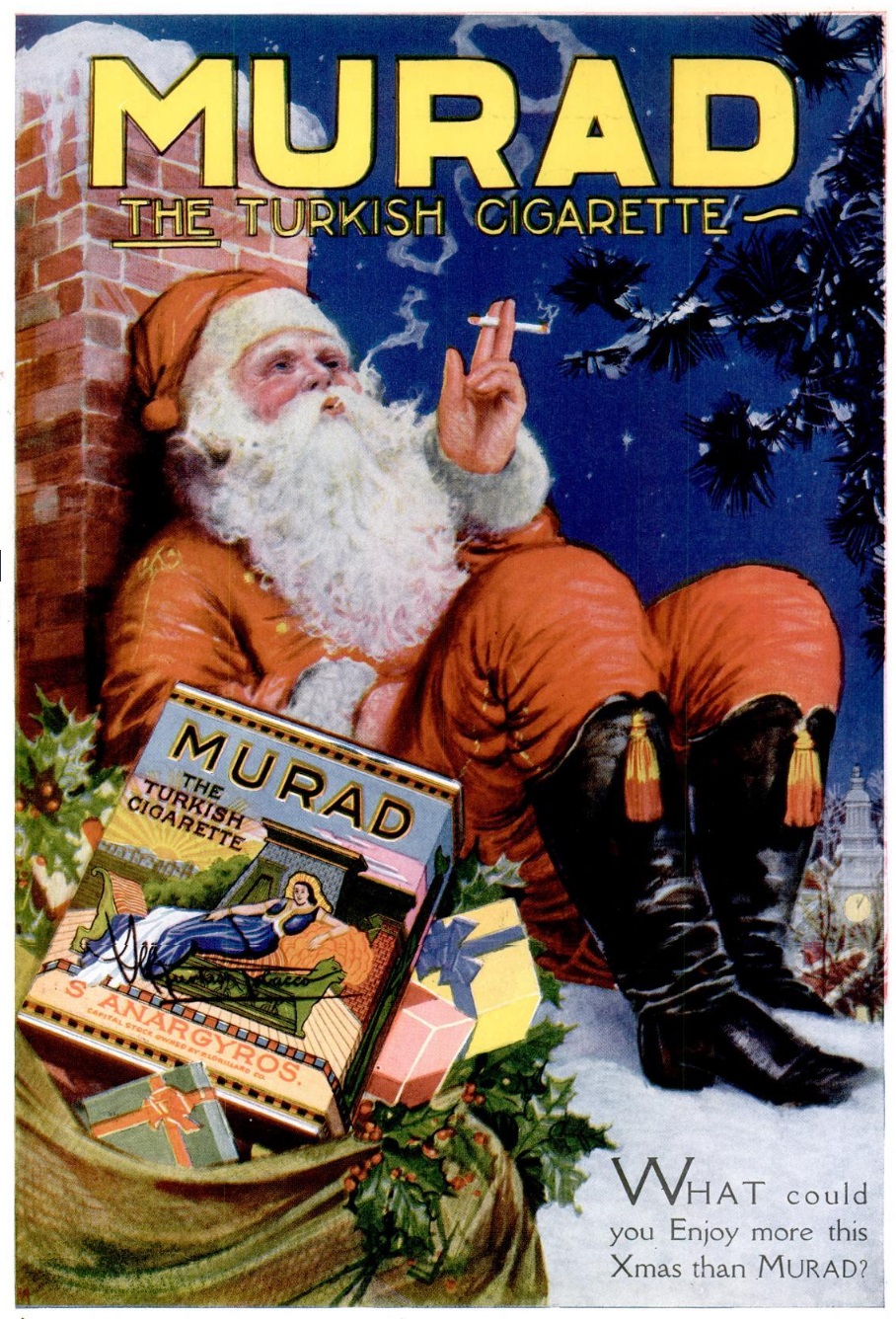 A century ago, after a long night of delivering presents, Santa relaxes. The ad appeared in Popular Science a hundred years ago this month, December 1920.
A century ago, after a long night of delivering presents, Santa relaxes. The ad appeared in Popular Science a hundred years ago this month, December 1920.

 A century ago, after a long night of delivering presents, Santa relaxes. The ad appeared in Popular Science a hundred years ago this month, December 1920.
A century ago, after a long night of delivering presents, Santa relaxes. The ad appeared in Popular Science a hundred years ago this month, December 1920.
On this All Saints Day, we present “For All the Saints” (Sine Nomine):
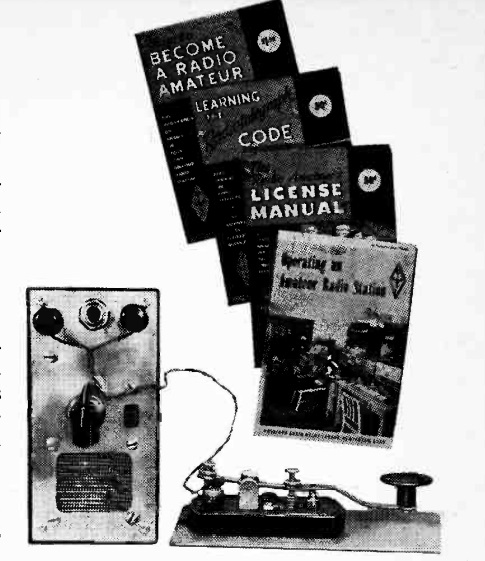 Fifty years ago, the October-November 1970 issue of Science and Electronics showed how to put together, at a total parts cost of about $4, this combination continuity-tester/code practice oscillator.
Fifty years ago, the October-November 1970 issue of Science and Electronics showed how to put together, at a total parts cost of about $4, this combination continuity-tester/code practice oscillator.
The circuit was dubbed by the author the “CON-TEST,” since it was first and foremost a continuity tester. But as the photo above shows, it was very suitable for use as a code practice oscillator.
The choice of transistor was not critical, but the author used a 2N170 for the audio oscillator, along with a 2N174 audio amplifier to produce some room-filling volume.
 Shown here in 1940 is the then mayor of New York, Fiorello LaGuardia impressing former mayor Jimmy Walker (standing) with the radio built into his desk drawer.
Shown here in 1940 is the then mayor of New York, Fiorello LaGuardia impressing former mayor Jimmy Walker (standing) with the radio built into his desk drawer.
The set was a gift from WOR radio, designed into the desk by the station’s chief engineer J.R. Poppele. There were a number of critical design constraints. The set had to blend in with the rest of the décor, and couldn’t clutter up the desktop. The mayor didn’t even have a telephone on the desktop, so there was certainly no room for a radio. The solution was to mount it in the drawer, with burglar-alarm-type switches mounted on the side to turn the set on whenever the drawer was opened. The set used direct-heater battery tubes, and would thus start to play as soon as the drawer was opened, without the normal warm-up period required by most tube sets.
The set was a Pilot T-71, a battery-electric portable. To make the drawer entirely self-contained, without the need for a power cord, it was set up to run on battery only. Multiple batteries were placed in parallel inside the drawer to ensure 500 hours of operating time before a battery change was needed. One potential problem, of course, of most broadcast sets is that the loop is directional. Normally, this doesn’t present a problem, since the set can be adjusted slightly. But since this was no longer an option, the loop antenna was mounted horizontally in the drawer to make it non-directional.
Also, the mounting necessitated having the panel lay horizontally. This was a potential problem, since the tubes ran the risk of shorting out internally if not vertical. This was solved by rotating the tube sockets so that they would be vertical.
The photo and description appeared in the October 1940 issue of Radio Craft, which noted that the idea presented the possibility of extra money for servicemen: “Here is an opportunity for aggressive radio Servicemen to drum up additional business. The order to install and service a built-in desk radio set frequently would result if Servicemen would only suggest to their customers the installation of a new or rebuilt radio set.”
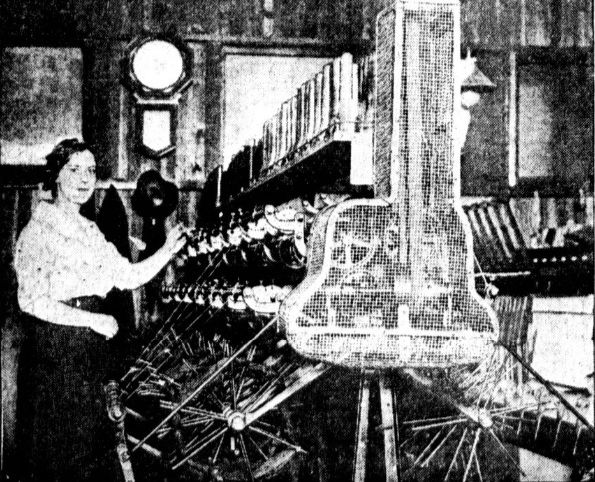 A hundred years ago, Miss Elise Updyke, of 2320 West Harold St., Philadelphia, worked as the operator of a bobbin winder machine at the Belmont Manufacturing Company, 2545 North Broad Street. a one mile walk away from her home. Today, both addresses are within a block of the same bus line, and it’s likely there were then as well. The material on the bobbins was woven into neckties.
A hundred years ago, Miss Elise Updyke, of 2320 West Harold St., Philadelphia, worked as the operator of a bobbin winder machine at the Belmont Manufacturing Company, 2545 North Broad Street. a one mile walk away from her home. Today, both addresses are within a block of the same bus line, and it’s likely there were then as well. The material on the bobbins was woven into neckties.
So chances are, Miss Updyke got up every morning, took the streetcar or bus to work, and filled bobbins. Her picture appeared a hundred years ago today in the Philadelphia Evening Public Ledger, October 11, 1920, in a daily feature, “Our City’s Workers and What They Do.”
 This wire service article is dated a hundred years ago today, October 6, 1920. Although the headline says “radio,” it appears that the system actually used an AF signal. The cable lying in the channel was the primary of a large transformer, and the coil in the ship was the secondary.
This wire service article is dated a hundred years ago today, October 6, 1920. Although the headline says “radio,” it appears that the system actually used an AF signal. The cable lying in the channel was the primary of a large transformer, and the coil in the ship was the secondary.
RADIO GUIDES ‘BLINDED’ SHIP FIFTEEN MILES
Dots and Dashes of New Invention Thwart Ambrose Channel Perils.
FIRST TEST AMAZING
Navy Proves Value of Device Young Californian Has Developed.
(By Universal Service.)
New York, Oct. 6.
With the glass front of the bridge completely covered with heavy canvas, rendering him blind to all intents and purposes, Commander H. H. Norton, U. S. N., this afternoon piloted the I destroyer Semmes through the narrow, devious ways of Ambrose Channel from the Ambrose light to Fort Lafayette, a distance of 15 miles.
The only thing he had to guide him was the monotonous click of a few dots and dashes repeating over and over again, a million times, the one word, n-a-v-y. But as long as he heard it, he knew I he was on the-right course.
If the sound grew slightly faint, he would turn a little lever right and left which accentuated or diminished the sound. That would show him that he was going either to the right or left of the center of the channel. Then he would turn the ship’s nose in the proper direction again.
Past the dangerous bend in the channel just off Roamer shoals, where many a pilot has met disaster, Commander Norton guided the Semmes as straight as a die along the center of the ships’ roadbed. Then, approaching Fort Lefayette, with hundreds of ships of all descriptions on every side he continued triumphantly on his sightless way.
Pilot System’s Flrst Test.
The occasion was the first test by the government of the radio piloting cable system, the invention of Earl C. Hanson. 28 years old, of Los Angeles. The test was arranged by Comdr. R. F. McDonnell, in charge of the government’s radio system
and was witnessed by a score of other naval officers, expert electricians and engineers.During the war there was much comment as to just how the warships were able to move through the mine infested waters. Just recently it has become known that they operated by a system of audio frequency sound waves. Young Hanson, who is connected with the Navy Department, decided that the idea could be made practical for guiding ships through narrow channels when fog rendered them useless and tied up all shipping. The Navy Department thought so well of the idea that a year ago it took over Hanson’s idea to complete its development.
For months past they have been busy laving an insulated electric cable along the entire length of Ambrose Channel. It required 87,000 feet of cable. One terminal of the generator producing the alternating current is connected at the shore and to a ground current. The other terminal is grounded at the bottom of the channel. Although the cable is fully insulated, it is a fundamental law of electricity that any conductor carrying an electric current produces a magnetic field around the conductor.
Copper wire on Board.
Aboard the Semmes (the only ship yet equipped to use the new invention) are two coils of copper wire on the bow.
These coils pick up the electric current and transmit it to a small set of amplifiers. Attached to these is an ordinary set of telephone receivers. From the shore end at Fort Hamilton is an automatic device which spells out “Navy.’
When a ship reaches the mouth of the harbor it picks up the sound within a thousand feet on either side of the actual location of the cable. Then, if the fog be so thick that the pilot cannot see ten feet on either side of him, he follows the sound, which gets louder and louder as he approaches. When he is astride the cable, all he has to do is to follow it, as simply as a blind man would follow a string stretched along the length of Broadway. Commander McConnell declared yesterday that if the system had been in operation during the dense fog which held up hundreds of ships outside the harbor last week, every one of them would have made their docks without an hour’s delay.
This clipping is from the Washington Herald, October 7, 1920.
One hundred years ago today, August 18, 1920, American women got the right to vote, with the ratification of the 19th Amendment to the U.S. Constitution. Tennessee was the 36th of the 48 states to ratify the amendment, and as the headline here notes, it happened in time for the 1920 presidential election.
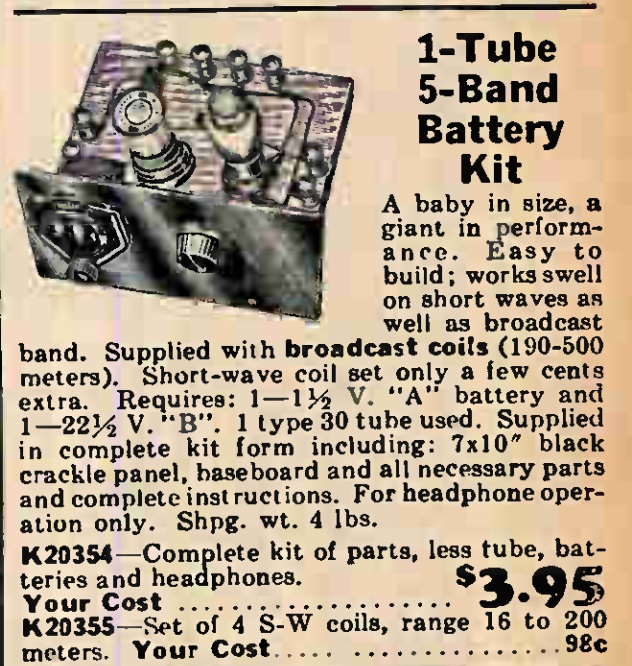 Eighty years ago, the beginner couldn’t go wrong with this one-tube radio kit from the 1940 Lafayette catalog. For $3.95 (plus tube, batteries, and headphones) he or she could put together this set and pull in broadcast stations, both local and distant. And for only 98 cents more, they could buy coils to cover four shortwave bands from 16 to 200 meters.
Eighty years ago, the beginner couldn’t go wrong with this one-tube radio kit from the 1940 Lafayette catalog. For $3.95 (plus tube, batteries, and headphones) he or she could put together this set and pull in broadcast stations, both local and distant. And for only 98 cents more, they could buy coils to cover four shortwave bands from 16 to 200 meters.
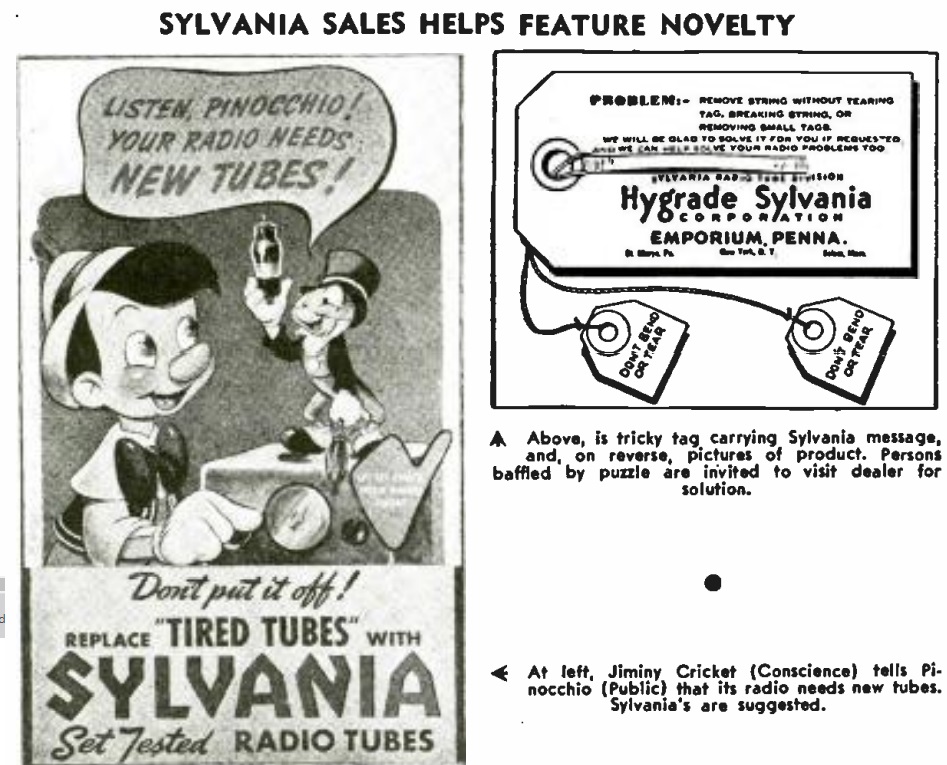 Jiminy Cricket is no fool, so he endorses Sylvania tubes in this ad shown in the July 1940 issue of Radio Craft. It’s not a magazine ad, but instead a picture of a poster that shops could display. And just to be on the safe side, Jiminy strongly suggests that you should just go ahead and replace all of the tubes while you’re at it, even if they’re still good.
Jiminy Cricket is no fool, so he endorses Sylvania tubes in this ad shown in the July 1940 issue of Radio Craft. It’s not a magazine ad, but instead a picture of a poster that shops could display. And just to be on the safe side, Jiminy strongly suggests that you should just go ahead and replace all of the tubes while you’re at it, even if they’re still good.
Also shown is a clever business card that probably won’t get thrown away immediately. It’s a disentanglement puzzle, the object of which is to remove the string from the tag without tearing or bending the tag or cutting the string. The photo here isn’t very clear, but it appears to be similar to the puzzle shown in this video.
Those who can’t figure out the puzzle are directed to their nearest Sylvania dealer, where the owner will show how to solve the puzzle, and also solve any radio problems that you might have. And while you’re there, he just might sell you a complete set of tubes to replace the perfectly good ones in the radio at home.
In the past, in lieu of business cards, I’ve used things such as customized rulers, promotional calendars, and wooden nickels. A puzzle made out of cardboard and string probably doesn’t have a lot of staying power, but it will probably get looked at.
 An interesting look at Herbert Hoover’s 1928 campaign can be found at the National Archives Hoover Heads Blog.
An interesting look at Herbert Hoover’s 1928 campaign can be found at the National Archives Hoover Heads Blog.